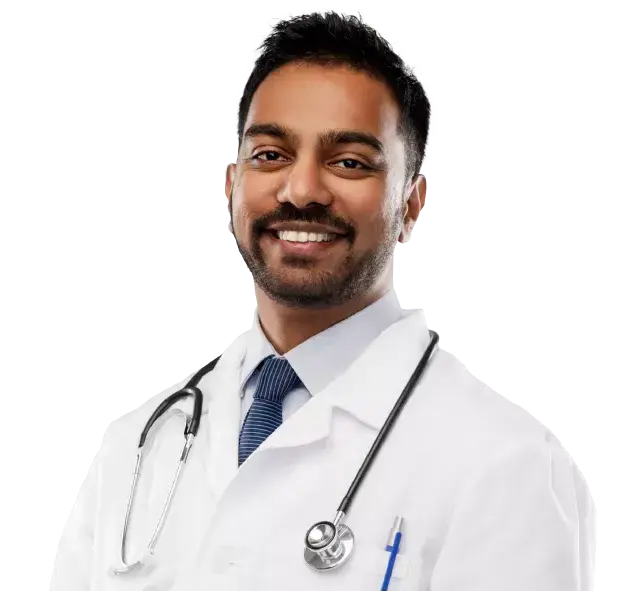
Select City
If you have salivary gland cyst or swelling, you may need parotidectomy surgery for treatment. Pristyn Care provides advanced minimally invasive parotidectomy surgery for a variety of parotid gland problems. Consult us right away.
If you have salivary gland cyst or swelling, you may need parotidectomy surgery ... Read More




Free Consultation

Free Cab Facility

No-Cost EMI

Support in Insurance Claim

1-day Hospitalization

USFDA-Approved Procedure
Choose Your City
It help us to find the best doctors near you.
Bangalore
Delhi
Hyderabad
Delhi
Gurgaon
Noida
Ahmedabad
Bangalore
Parotidectomy is the removal of all or part of the parotid gland. The parotid glands are the largest salivary glands and produce a bulk of the saliva. It is generally performed for parotid tumors, infections, and cysts.
However, parotid removal does not necessarily mean that the patient will constantly have dry mouth, as there are many other major and minor salivary glands in the mouth that maintain salivary production and flow.
The surgery is performed via an incision in front of the ear that extends just below the natural skin crease in the neck to hide the surgical scar. There are two lobes of parotid gland, and based on the amount of parotid tissue to be removed, surgery can be of the following types – total parotidectomy, superficial parotidectomy, and radical parotidectomy.

Fill details to get actual cost
Pristyn Care is a leading surgery provider all across India. Working as an asset-light model, Pristyn Care has associated itself with super specialty and multispecialty hospitals in over 400 cities to provide safe, affordable, and exemplary surgical treatment to all patients.
Pristyn Care is associated with the best ENT hospitals in India for advanced treatments such as minimally invasive parotidectomy. Some other facilities provided at Pristyn Care are free preoperative and preoperative consultations with ENT experts, complimentary cab and meal facility for surgery, and many more.
Before the surgery, patients may need the following diagnostic and imaging tests to determine the severity of the condition, extent of tissue to be removed, and type of surgery to be performed. Lab tests like FNAC (fine needle aspiration cystoscopy), neck dissection, and prophylaxis help determine the nature of parotid swelling.
Benign tumors and cysts can be removed surgically, but if the patient has a malignant tumor, they may need chemotherapy, radiation treatment or other similar treatment to prevent metastasis. Both CT and MRI scans help plan aspects of the surgery, like determining the surgical approach, the amount of parotid gland to be removed, etc. Imaging tests also help avoid facial nerve and other structures while performing the surgery to avoid permanent complications.
Parotidectomy is typically performed under general anesthesia. Following this, skin incision is performed. The incision is extended to the neck if necessary, however, in most cases the surgeon tries to make the incision as cosmetic as possible to avoid aesthetic repercussions.
After the incisions, the surgeon raises a flap to gain access to the parotid gland. The surgeon moves the muscles, nerves and other tissues out of the way and removes the necessary amount of parotid gland.
Then, the surgeon wakes the patient a little to examine the motor nerve function of the facial nerve. If there is no damage or a little damage, the surgeon performs nerve reconstruction and places the graft tissue to preserve remaining parotid tissue, restore normal facial contours, and protect the facial nerve from future damage.
In most cases, the surgeon will place a drain in the surgical site before closing the suture to remove the extra blood, fluid, saliva, and discharge and delay post surgical swelling. Parotid gland tumors often spread to the surrounding lymph nodes, so those lymph nodes are often removed as well.
Diet & Lifestyle Consultation
Post-Surgery Follow-Up
Free Cab Facility

24*7 Patient Support
Parotidectomy is a major surgery and the patient needs to prepare thoroughly to ensure treatment success. Make a list of questions before the surgery and ensure all your doubts are cleared before the surgery. Consult your surgeon and inform them all about your medical history so they can plan your treatment accordingly.
Stay healthy, if you have any pre-existing conditions like diabetes, hypertension, etc., then make sure they are under control. Follow a healthy diet and stay as active as you can. Prepare an overnight bag for hospital stay. Arrange for someone to take you home after the surgery, and depending on your condition, you may need an attendant for a couple of days.
After the surgery, you will be moved to the recovery room for observation. Most patients need one day hospitalization after a parotidectomy. The dressing is usually removed after the first day and is replaced by a tight parotid wrap to reduce the swelling. The wrap is necessary, especially at night, for the next two weeks.
Sleep with 2-3 pillows to support your neck and reduce the postsurgical inflammation. Proper sleep time and posture are important to improve healing ability. If a drain is used, it is usually removed on the fourth day, when the discharge has comparatively reduced. Sutures are normally taken out on the 6th or 7th day and most people can rejoin work within 10-14 days of the surgery. However, they should wait at least 3-4 weeks before performing strenuous activities.
Some common recovery tips a patient should follow are:
A parotidectomy is generally performed for benign and malignant parotid gland tumors. Pleomorphic adenoma and Warthin’s tumors are the most common benign parotid gland tumors, while mucoepidermoid and adenoid cystic carcinoma are the two most common malignant primary parotid tumors.
Some inflammatory conditions like chronic parotitis, deep salivary calculi, or parotid abscess are also occasionally treated with a total parotidectomy. Sialorrhea and parotid duct cysts are also treated through parotidectomy occasionally.
There are almost no contraindications for a parotidectomy, as long as the patient is healthy enough for general anesthesia. Parotidectomy is almost never performed under local anesthesia. It is also not recommended for patients with HIV and parotid swelling near the facial nerves.
The most common risks and complications of a parotidectomy are:
There is a 25-50% risk of facial weakness after parotidectomy, and the risk of permanent weakness is around 1-2%. Risk of mortality is very low and however certain tumors may recur, especially if the parotid gland is partially removed.
Parotidectomy is the best treatment for parotid gland tumors, especially malignant neoplasms to prevent metastasis. It also helps defend against benign tumors from growing so large that it starts damaging the facial nerves. It is a very reliable treatment for swellings that can damage essential nerves and tissues in the face and neck.
A microparotidecotmy is a minimally invasive parotid surgery, during which all or a portion of the parotid gland is removed through a tiny well-hidden incision near the ear. This helps avoid potential nerve damage and other complications related to the surgery, and provides much better aesthetic appearance after the surgery.
Often, after parotid gland removal, despite facial reconstruction, there is a lot of sagging skin tissue remaining which affects the facial aesthetics. Therefore, most parotid gland surgeons perform a facelift simultaneously during the surgery.
There is a scar after parotidectomy, but in most cases, it becomes barely noticeable as time passes. If you have a noticeable scar and you don’t like it, you can get skin grafting to completely remove the scar.
The procedure will not affect speech and the patient may eat normally the day of your procedure. However, most patients have to be careful about their diet after the surgery. They should eat soft foods and avoid salty, spicy, crunchy, and hard-to-chew foods.
Paroidectomy can be performed by any doctor trained in head and neck surgery like- ENT surgeon (otolaryngologist), general surgeon, or an oral maxillofacial surgeon. Make sure you check your surgeon’s credentials, qualifications, and experience before getting the surgery.
Extracapsular dissection
It is performed for benign tumors that are not pleomorphic adenoma. The surgeon uses a facial nerve monitor to identify the facial nerve and the tumor is removed from the top.
Partial/superficial parotidectomy
During the surgery, the tumor is resected with a cuff of parotid tissue, while preserving the facial nerve. It is generally performed for benign parotid lesions and lymph node metastasis into the superficial lobe.
Total parotidectomy
The entire parotid gland is removed during total parotidectomy while identifying and preserving the facial nerve for aggressive malignant tumors, deep parotid lobe tumors, lymph node excision in the deep lobe, vascular malformations, or in large tumors where the distinction between superficial and deep lobes is unclear.
Radical parotidectomy
During a radical parotidectomy, the entire gland is removed and facial nerve damage is pre-established due to extensiveness of the tumor. Nerve grafting and facial reanimation procedures are performed simultaneously during the surgery.

